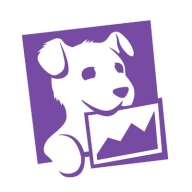

Datadog and Pico Corvil Analytics compete in data monitoring and analytics. Datadog has an edge with its versatile monitoring tools, especially in cloud application environments, while Pico Corvil excels in network performance metrics, providing deep latency and network insights.
Features:Datadog's versatility includes tracking cloud applications, real-time logs, and expansive integrations like AWS and Docker. Its intuitive dashboard makes it easy to access critical metrics. Pico Corvil focuses on precise network analysis, with features like latency management and microburst detection critical for network-heavy operations.
Room for Improvement:Datadog could enhance its APM tools for better multilevel analysis and improve anomaly detection accuracy. The pricing model might benefit from greater transparency. Pico Corvil would gain from simplifying its setup process and providing more seamless integration with third-party tools. Enhanced visual analytics could also be beneficial for broader user engagement.
Ease of Deployment and Customer Service:Datadog's cloud-based deployment model makes integration with cloud services straightforward, backed by responsive customer service. Pico Corvil offers detailed network diagnostics but involves a complex setup process, though it provides excellent service for network-centric deployments.
Pricing and ROI:Datadog uses a consumption-based pricing model offering flexible scaling, contributing to a quicker ROI in varied environments. Pico Corvil involves higher initial costs due to its specialized focus but can deliver substantial ROI in environments where network latency precision is critical.


Datadog is a comprehensive cloud monitoring platform designed to track performance, availability, and log aggregation for cloud resources like AWS, ECS, and Kubernetes. It offers robust tools for creating dashboards, observing user behavior, alerting, telemetry, security monitoring, and synthetic testing.
Datadog supports full observability across cloud providers and environments, enabling troubleshooting, error detection, and performance analysis to maintain system reliability. It offers detailed visualization of servers, integrates seamlessly with cloud providers like AWS, and provides powerful out-of-the-box dashboards and log analytics. Despite its strengths, users often note the need for better integration with other solutions and improved application-level insights. Common challenges include a complex pricing model, setup difficulties, and navigation issues. Users frequently mention the need for clearer documentation, faster loading times, enhanced error traceability, and better log management.
What are the key features of Datadog?
What benefits and ROI should users look for in reviews?
Datadog is implemented across different industries, from tech companies monitoring cloud applications to finance sectors ensuring transactional systems' performance. E-commerce platforms use Datadog to track and visualize user behavior and system health, while healthcare organizations utilize it for maintaining secure, compliant environments. Every implementation assists teams in customizing monitoring solutions specific to their industry's requirements.
We monitor all Network Monitoring Software reviews to prevent fraudulent reviews and keep review quality high. We do not post reviews by company employees or direct competitors. We validate each review for authenticity via cross-reference with LinkedIn, and personal follow-up with the reviewer when necessary.